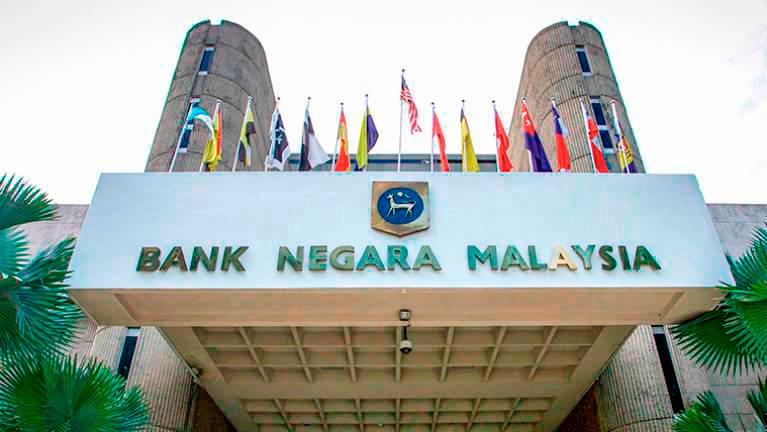PETALING JAYA: Bank Negara Malaysia’s Monetary Policy Committee (MPC) is scheduled to meet in early May and the question on everyone’s mind is whether it will choose to pause or increase the Overnight Policy Rate (OPR).
At its last meeting on March 9, the central bank’s MPC decided to maintain the policy rate at 2.75%. This decision came as the global economy continued to face challenges from high cost pressures and rising interest rates.
Emit Research head of social, law & human rights Jason Seong Wei Loh said the MPC is expected to pause the OPR increases at its May meeting in order to assess the lagged impact of the previous consecutive hikes and monitor economic situation.
“Accordingly, the MPC is not expected to increase the OPR this May, as this would be accommodative of the prevailing economic conditions and in line with overall price stability, given that our CPI (Consumer Price Index) is decreasing, albeit slowly,” he told SunBiz.
However, the central bank should not treat this pause as a temporary measure that distracts from the profound impact that OPR hikes caused, he said.
“Bank Negara should not use the lag effect of the OPR transmission, which takes between 12 and 18 months, as a justification for pursuing the normalisation agenda – of which the end goal is 3.25%. To do so would be counterproductive because OPR hikes add to inflationary pressure, which sends a signal to pursue further rate hikes until normalisation is achieved. But by then, further rises in the OPR hikes would contribute to recession, meaning it is too late,” cautioned Loh.
“A pause would position Malaysia behind the curve as the central bank would still eventually have to cut the rate later on – by which time it could be too late as we’d already be in a recession.
“We should be making a pre-emptive strike rather than reacting because by then the MPC could be compelled to cut the OPR drastically – which, again, would not reflect well on its reputation.
“What we should be doing now is immediately cut the OPR and leave it at 1.75% until we’re sure the global headwinds have gone away and that we are out of the woods,” he said.
However, if the MPC chooses to continue the pause indefinitely, it would be in anticipation of an economic slowdown. At that point, it would then cut the OPR accordingly.
“GDP-wise, Bank Negara projects growth to ease to between 4% and 5%. So, this represents a slowdown from the 8.7% growth in 2022. Therefore, it could be expected that Bank Negara is well prepared to pause and give room for rate cuts later on,” said Loh.
However, a rate cut that is too drastic, such as a reduction of 75 basis points, could expose the central bank to criticisms about its credibility and undermine confidence in its reputation for being cautious.
“In this scenario, our central bank would be reacting to the Fed’s policy trajectory of continuing to increase the federal funds rate, which is expected to reach 5% and above by May, despite a looming recession,” Loh said, referring to the US Federal Reserve.
It is anticipated that there will be no inflationary pressures stemming from oil prices. Thus, the central bank will not be weighed down by worries of new rounds of inflation and will have the leeway to lower the OPR if necessary.
“Despite Opec’s recent production cuts, experts predict that oil prices will remain steady, as the cartel wouldn’t risk accelerating the global economic slowdown with further cuts,” he said.
The central bank, while cognisant of the Fed’s predisposition and exhibiting a pattern of policy behaviour which gives the impression of coordinated and synchronised action in concert with other central banks, nonetheless remains fundamentally cautious, Loh said.
The decision to resume the OPR hike would be based on the projected scenario that, although our CPI has eased to 3.7% (as of Jan 23), overall core inflation remains stubbornly elevated at nearly 4% (3.9%), even though the gap is small.
The CPI could remain range-bound, staying between 3.7% and 3.9% for some time. The MPC might take into account the possibility that the desired lower CPI might not materialise soon or steadily when deciding whether to further increase the OPR.
“The policy rationale could be that if demand isn’t dampened, this could push the inflation rate up again on the basis that the prices are reflective of current supply conditions,” Seong said.
Meanwhile, Geoffrey Williams, Provost for Research and Innovation at the Malaysia University of Science and Technology, commented that there is no need to increase interest rates at the moment.
“In fact, BNM has been clear that any interest rate increases made today will not have an effect until 24 months later. Therefore, nothing that happens now will be affected by changes in interest rates. In particular, BNM cannot bring down inflation this year by raising the OPR in May.
“Global economic factors are the main risk, but they only indirectly affect the OPR here. BNM does not follow the Federal Reserve, nor does it change the OPR to try to control the exchange rate. US inflation is falling sharply, so it is less likely that US rates will rise,“ Williams said.












